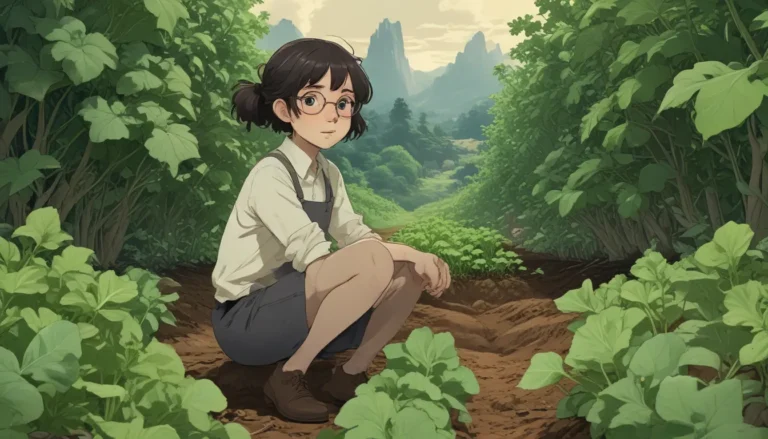The Ultimate Guide to Planting, Growing, and Harvesting Dill Weed and Seed

Anethum Graveolens: A Delightful Herb for Your Garden
Welcome to the wonderful world of dill, where Mediterranean-style meals, warm spring days, and feathery plants come together to create a delightful experience. If you’re a fan of this aromatic herb, you’ll be thrilled to learn that you can easily grow your own supply of fresh dill at home.
I’ll walk you through every step of the process, from planting to harvesting, so you can enjoy the ornamental beauty and savory taste of dill right in your backyard. Let’s dive into the exciting journey of cultivating dill together!
What You’ll Learn
- Cultivation and History
- Propagation
- How to Grow
- Growing Tips
- Cultivars to Select
- Managing Pests and Disease
- Harvesting
- Preserving
- Recipes and Cooking Ideas
- Quick Reference Growing Guide
Cultivation and History: Discovering the Roots of Dill
Originating from the Mediterranean region and western Asia, dill has a rich history intertwined with ancient culinary and medicinal practices. With its feathery leaves, delicate flowers, and unmistakable aroma, dill has enchanted gardeners and cooks for centuries.
Named Anethum for its strong smell, dill has been used in food and medicine for over 5,000 years, tracing back to ancient Egypt. Its medicinal properties, culinary versatility, and ornamental appeal make it a cherished herb in various cultures around the world.
In the garden, dill’s graceful appearance and easygoing nature make it a favorite among both beginner and experienced gardeners. Whether you’re drawn to its flavorful leaves or fragrant seeds, dill offers a multitude of uses that will enhance your garden and kitchen alike.
Dill Plant Propagation: Growing Your Own Patch of Dill
Embark on your dill-growing adventure by starting from seeds, tapping into the herb’s self-sowing capabilities to create a sustainable patch of aromatic goodness. Consider the cool season preferences of dill, ensuring it thrives in USDA Hardiness Zones 2 to 11 with adequate sun and well-drained soil.
By planting dill seeds directly into the ground, you can avoid transplanting shock and encourage healthy growth. Make sure to provide consistent watering and proper spacing to allow your dill plants to flourish without competition from weeds or neighboring plants.
How to Grow Dill Weed: Cultivating Your Own Herbal Oasis
Once your dill plants take root, maintaining their growth is a straightforward endeavor that requires minimal effort. Position them in a sunny location with well-drained soil, ensuring they receive adequate water and light throughout the growing season.
Consider the following tips to maximize your dill harvest and ensure a bountiful supply of fragrant leaves and seeds:
- Plant in full sun for sturdy stems and vibrant growth.
- Maintain soil pH at 5.6 to 6.5 for optimal development.
- Provide well-draining soil with moderate watering needs.
- Fertilize lightly with organic compost or specialized herb fertilizers.
- Encourage foliage production by removing flower heads promptly.
By following these guidelines, you can cultivate robust dill plants that yield abundant foliage for culinary use and seeds for pickling or seasoning.
Dill Cultivars to Select: Choosing the Perfect Variety for Your Garden
Selecting the right dill cultivar can enhance your gardening experience by tailoring the plant to your specific needs and preferences. Whether you prioritize leaf production, seed quality, or ornamental value, there’s a cultivar that suits your requirements.
Here are a few popular dill cultivars to consider:
- ‘Bouquet’: Ideal for abundant seed production and fresh cut flowers.
- ‘Elephant’: A late-flowering variety with prolonged leaf harvest.
- ‘Hera’: A bunching dill with fragrant foliage and slow bolting tendencies.
Each cultivar offers unique characteristics that cater to different gardening styles and culinary preferences. By choosing the right one for your garden, you can enjoy a customized dill-growing experience that meets your needs perfectly.
Managing Pests and Disease: Protecting Your Dill Crop from Harm
Although dill is relatively pest and disease-resistant, it’s essential to monitor for common issues that can affect its growth. From aphids to root-knot nematodes, several pests and diseases can impact your dill plants if left unchecked.
Be vigilant in inspecting your plants for signs of infestation, and use preventive measures to deter unwanted visitors from harming your crop. By incorporating companion planting, beneficial insects, and cultural practices, you can maintain a healthy dill garden without resorting to chemical treatments.
Harvesting Dill: Enjoying the Fruits of Your Labor
As your dill plants mature, you’ll have the pleasure of harvesting fresh leaves and seeds for culinary delights. Whether you’re making tzatziki, pickles, or herbal teas, fresh dill adds a fragrant touch to your favorite dishes.
To ensure optimal flavor and quality, harvest dill leaves when they’re young and aromatic, and seeds when they turn tan and dry. Preserve excess foliage by freezing or drying it, allowing you to enjoy dill’s flavor year-round in various culinary creations.
Recipes and Cooking Ideas: Exploring Dill’s Culinary Potential
Dive into the world of dill-inspired cuisine with tantalizing recipes that celebrate this herb’s unique flavor profile. From Mediterranean classics to inventive pairings, dill adds a refreshing twist to traditional dishes and modern creations alike.
Whether you’re garnishing potatoes with minced garlic and dill or fermenting pickles for a zesty snack, dill’s versatility shines through in every recipe. Experiment with different flavor combinations and cooking techniques to discover the full potential of this aromatic herb in your kitchen.
Quick Reference Growing Guide: A Handy Resource for Dill Enthusiasts
To assist you in your dill-growing journey, here’s a quick reference guide with essential information on planting, growing, and harvesting dill:
- Plant Type: Annual, self-sowing
- Water Needs: Moderate
- Native to: Mediterranean, western Asia
- Hardiness (USDA Zone): 2-11
- Soil Type: Average to poor
- Season: Summer-fall
- Soil pH: 5.6-6.5
- Exposure: Full sun
- Height: 8-48 inches
- Spread: 4-24 inches
- Companion Planting: Garlic, onions, leeks, soybeans
- Avoid Planting With: Carrots, fennel, caraway, cumin
By referring to this guide, you can quickly access key information on dill cultivation and management, making it easier to care for your plants and optimize their growth throughout the season.
Conclusion: Embracing the Delights of Dill in Your Garden
As you embark on your dill-growing adventure, remember to savor the journey and enjoy the process of cultivating this aromatic herb in your garden. From planting seeds to harvesting fresh leaves and seeds, each step offers an opportunity to connect with nature and immerse yourself in the beauty of growing your own food.
Whether you’re a seasoned gardener or a novice enthusiast, dill provides a rewarding experience that enriches your culinary repertoire and enhances your garden’s vibrancy. By following the tips and recommendations outlined in this guide, you can cultivate a thriving dill patch that yields flavorful herbs and spices for your cooking pleasure.
So, be inspired by the whimsical allure of dill, and let its fragrant presence infuse your garden with charm and character. Happy planting, growing, and harvesting, dear gardener – may your dill crop flourish abundantly and bring joy to your heart and kitchen!
Note: The information presented in this article is based on reliable sources and expert insights, offering valuable guidance for dill enthusiasts seeking to enhance their gardening skills and culinary repertoire. For further inquiries or detailed assistance, do not hesitate to reach out to experienced horticulturists, extension offices, or gardening communities in your area.





